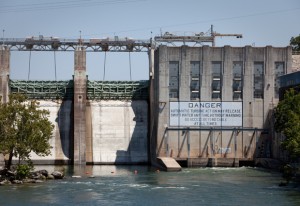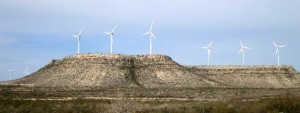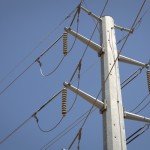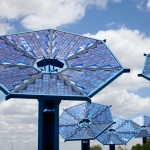As Renewable Energy Grows, Wind and Solar Pull Ahead of Hydropower
Wind and solar energy now routinely surpasses hydroelectric generation as an energy source in the United States, according to the U.S. Energy Information Administration.

Photo by Daniel Reese for KUT News.
Hydroelectricity generated by Austin's Tom Miller Dam is a renewable resource. Photo by Daniel Reese for KUT News.
Hydropower is the largest source of renewable energy in the U.S. (but, not surprisingly, not in Texas). The state’s online Window on State Government calls it “a tiny portion of the state’s electricity supply with little economic impact and limited prospects for expansion.”
However, Texas is actually a leader in clean energy development. Programs like state renewable portfolio standards and federal tax credits for renewable energies have encouraged the growth of wind and solar power generation, according to the EIA. The effect has been particularly pronounced in Texas, the nation’s biggest wind energy producer.

Mose Buchele/StateImpact Texas
Wind turbines in West Texas help produce record amounts of electricity for the state.
Nationally, wind generation has increased from three percent to over 30 percent of total renewable generation since 2003. Texas wind power saw tremendous growth during that time. With the Texas Renewable Portfolio Standard from 1999 and the state’s Emerging Technology Fund from 2005, Texas energy demand met with wind power rose from one percent in 2001 to 10 percent in 2014.
In solar generation, Texas is lagging behind some other sunny Southwestern states, but progress is underway. The city of El Paso doubled its solar power generation capacity in 2014 and will rely heavily on a massive new solar farm (even if it’s in New Mexico). Austin and San Antonio have also become national frontrunners in the use of solar energy.
Perhaps the biggest boost for renewable energy in Texas was a recently completed $7 billion project to connect wind farms of West Texas and the Panhandle to big cities where the power is used. The project has opened huge energy markets, which once relied on nearby power plants, to wind production hundreds of miles away.
Hydropower came to Texas in the 1930’s as part of President Roosevelt’s New Deal economic stimulus. The Lower Colorado River Authority was initially created in 1935 as a quasi-public corporation that qualified to receive New Deal funding from the federal government to build six dams on the Colorado River by 1941. Today, Texas has 23 dams with hydroelectric generators.

Hydropower remains the top renewable energy source in the Pacific Northwest, where in Washington and Oregon it accounts for 69 percent and 56 percent of total electricity generation, respectively, according to the EIA.

